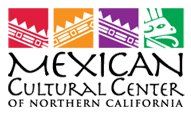For Mexicans, maize is not a crop but a deep cultural symbol intrinsic to daily life. Corn was domesticated from a grass called teocintle by the peoples of Meso-America approximately 10,000 years ago. Often referred to as humanity’s greatest agronomic achievement, maize is now grown all over the world.
Source: Unsplash
Maize
Did you know the Grutas de Cacahuamilpa National Park in Guerrero, México is best known for its caverns? These are one of the largest cave systems in the world.
Grutas de Cacahuamilpa National Park
The State of Chiapas is the most southern state in México, sometimes seen as a mysterious place, but the biodiversity is vast and beautiful. The Cascadas de Agua Azul are waterfalls and naturally-made swimming pools made of limestone beds on the Xanil River and the water’s intense blue color is due to the amount of limestone and other minerals in the river. Have you been to Chiapas?
Photo: Eduardo Robles Pacheco/Flickr
Cascadas de Agua Azul, Chiapas
Did you know the poinsettia or Flores de Noche Buena (the flower of Christmas) originated in México? Originally called “Cuetlaxochitl” by the Aztecs, these flowers are native to México and Central America, then it was introduced to the United States in 1820 by a US ambassador. Now, poinsettias are a symbol of the holiday season everywhere!
Flores de Noche Bueno (Poinsettia)
Ponche, or punch, is a hot beverage made by simmering several fruits along with water, brown sugar, and cinnamon but ingredients vary depending on the region. Nevertheless, this delicious Christmas beverage is not of Mexican origin, as it was brought to the country by the Spanish. The punch is a mixture of European and Indigenous gastronomies.
Source: El Universal
Ponche
Atole is a drink made with masa, finely ground corn flour. When chocolate is added, it becomes champurrado. The word “atole” is derived from Nahuatl, the still-living language of the Aztecs, who were defeated by Hernán Cortez in 1521 in what is now México City. Atole was popular long before Cortez surprised Montezuma with a visit, so the people of México have been drinking atole for many centuries.
Source: Chicago Tribune
Atole
Tamale
Tamales are a dish many Mexicans enjoy during the holidays with a long history of existence. It is said that tamales originated in Mesoamerica as early as 8000 to 5000 BCE. The preparation of tamales is likely to have spread from the indigenous culture in México and Guatemala to the rest of Latin America. The Aztec and Mayan civilizations, as well as the Olmec and Toltec before them, used tamales as easily portable food for hunting trips, and for traveling long distances, as well to support their armies. Tamales were also considered sacred as it is the food of the gods. Aztec, Maya, Olmeca, and Tolteca all considered themselves to be the people of corn and so tamales played a large part in their rituals and festivals.
Source: Wikipedia













